Full Presentation with Narration
References & Resources
Humanitarian Education
Power & Battery Related
Diagnostics
Rapid Diagnostic Tests (RDTs)
Portable Lab Equipment
Other Equipment
Pediatric Trauma
Reading for General Preparation, Background and Mindset
Clinical Practice Guidelines & Best Practices
Tactical Medicine Training Overview
Tactical Medicine Training Providers
HEAT
Acknowledgements
The following individuals have taught me, supported me, challenged me, broadened my horizons or otherwise changed me for the better as a person, as a humanitarian, and as a medical provider.
Most of them are still with us, those that are not haven’t been forgotten. May their memory be a blessing.
Mike Turconi
The OSW crew (Justin, Zach, Eric, Franz, Joel, Dr. Risk)
F. D. C. Willard (aka Chester)
Cora and Jojo
Pete Reed
Alex Potter
Eric Thepsiri
David Fifer
Jeff Boardman
Maj. John Pryor, MD
Jenny Martino, MD
Nirma Bustamante, MD
Scott Ruddick
A big thank you to Dave Young for enjoying our conversation in Kramatorsk, Ukraine so much that he invited me to speak at the WMS Summer Conference where this presentation was first delivered.
Humanitarian Education
To learn more about the basics of humanitarian action visit HumanitarianU.org and DisasterReady.org.
Programs from these sites have been used as part of pre-deployment training I have been given.
A course specific to humanitarian healthcare has been created by the Faculty of Remote, Rural and Humanitarian Healthcare (Royal College of Surgeons of Edinburgh) and UK-Med. The Introduction to Humanitarian Healthcare Online Course will focus on the unique aspects of providing healthcare within a humanitarian organization and context, not exclusively conflict zones.
There are some longer form courses available on Coursera including Health in Complex Humanitarian Emergencies, Foundations of Global Health Specialization, When Disaster Meets Conflict, Global Health and Humanitarianism, International Humanitarian Law in Theory and Practice, and Non-Communicable Diseases in Humanitarian Settings.
From edX, you might consider Humanitarian Logistics and Humanitarian Response to Conflict and Disaster.
Power & battery related
Devices which charge via standardized connections are preferred. USB-C is ideal for high power transfer and standardization (granted not all USB-C cables will do high power but even at low power may charge faster than Micro-USB).
Micro-USB is the next most common charging port but is being phased out on most newer, mid to high end electronics using standardized connections.
Devices with removable standardized batteries (AA, AAA, CR123) provide the option to easily carry replacement batteries and to use rechargeable variants of the original battery. You can also purchase replacement disposable batteries on the local economy with little to no issue.
Using a rechargeable battery with built in charging port means you do not need to carry an external charging brick for the batteries, only whatever cable is needed to connect the battery to a wall wort which should be the same as what you use for charging everything else.
Example of a AA battery with micro-USB charging port
Run time may be a little lower with this style of rechargeable batteries but I have not found the slightly shorter time to be an issue.
The only devices I’ve found so far which are picky about swapping in rechargeable batteries are SureFire flashlights. They seem to not like rechargeable CR123 batteries which are not the SureFire brand rechargeable. When using a non-SureFire rechargeable CR123 in an E1B it flickers between high and low.
Fortunately the SureFire rechargeable batteries and their charger are available as a quite compact package so I don’t mind carrying that if needed.
My primary (Streamlight MicroStream 250-lumen) and secondary (SureFire Stiletto Pro) flashlights as well as my headlamp (Nitecore NU25) are all rechargeable without replaceable batteries. A tertiary flashlight (JETBeam BA10) uses 1 AA rechargeable battery (or can use a disposable battery).
For cold weather work my primary flashlight is the SureFire Fury Dual Fuel with a Thyrm SwitchBack Finger Ring. This combination gives me a bright source of light which I can easily use and retain with bulky gloves. The “Dual Fuel” feature allows the light to run off of 2 disposable CR123A batteries, two rechargeable CR123A, or the longer SF18650B rechargeable (MicroUSB port built in for charging)
I should have purchased the Intellibeam version of the Fury which adjusts the brightness but I made a mistake when ordering.
If I’m working in consistently dark and cold places I usually have a headlamp around my neck plus the Fury so if I need a dimmer beam I can use the headlamp.
DIAGNOSTICS
WelchAllyn FlexiPort Multi-Cuff with DS44 Gauge
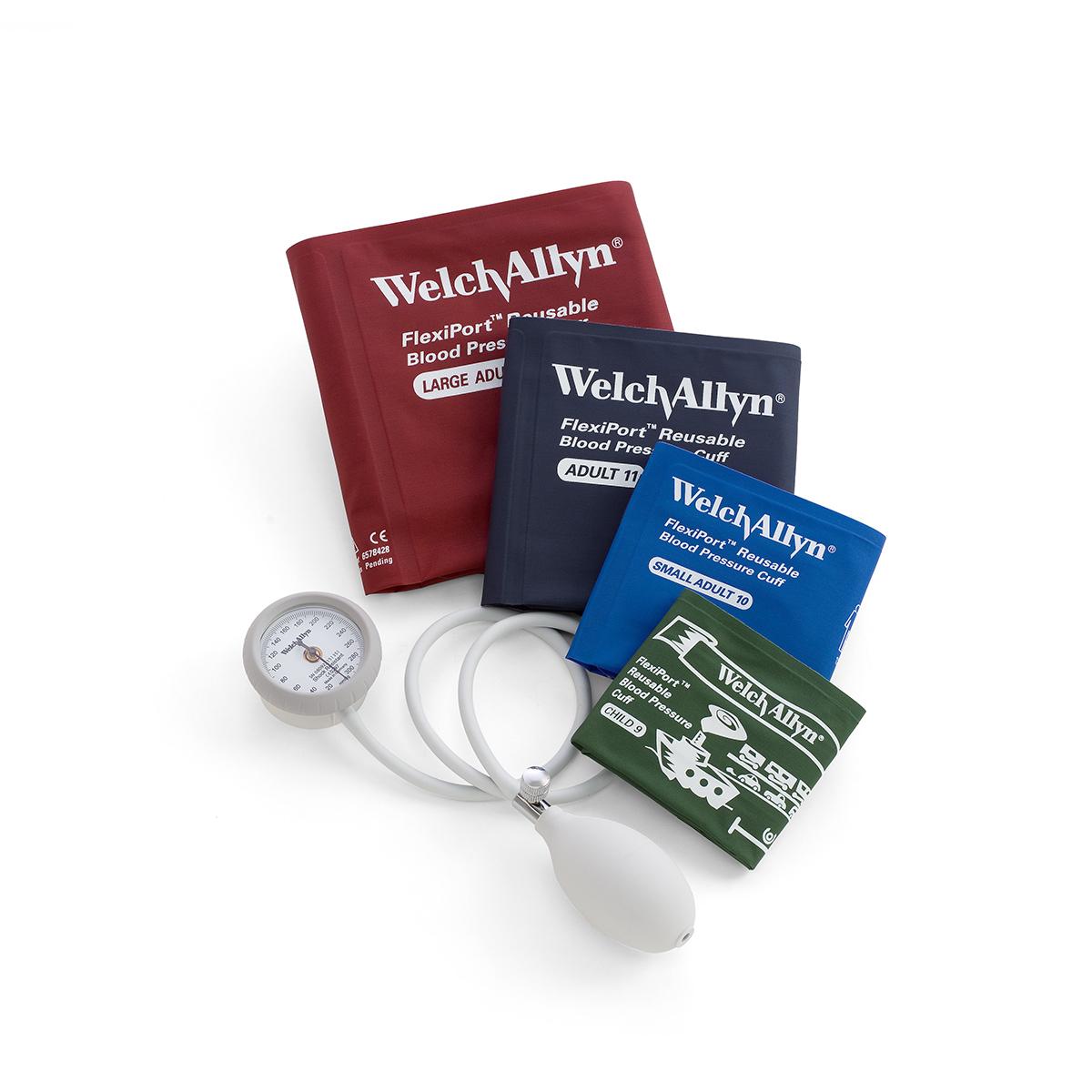
Manufacturer link provided. Google the product to find sellers. These complete kits or individual items periodically come up on eBay at a significant savings.
With one durable gauge you can swap between four different size BP cuffs which can be easily cleaned in the field and potentially even repaired.
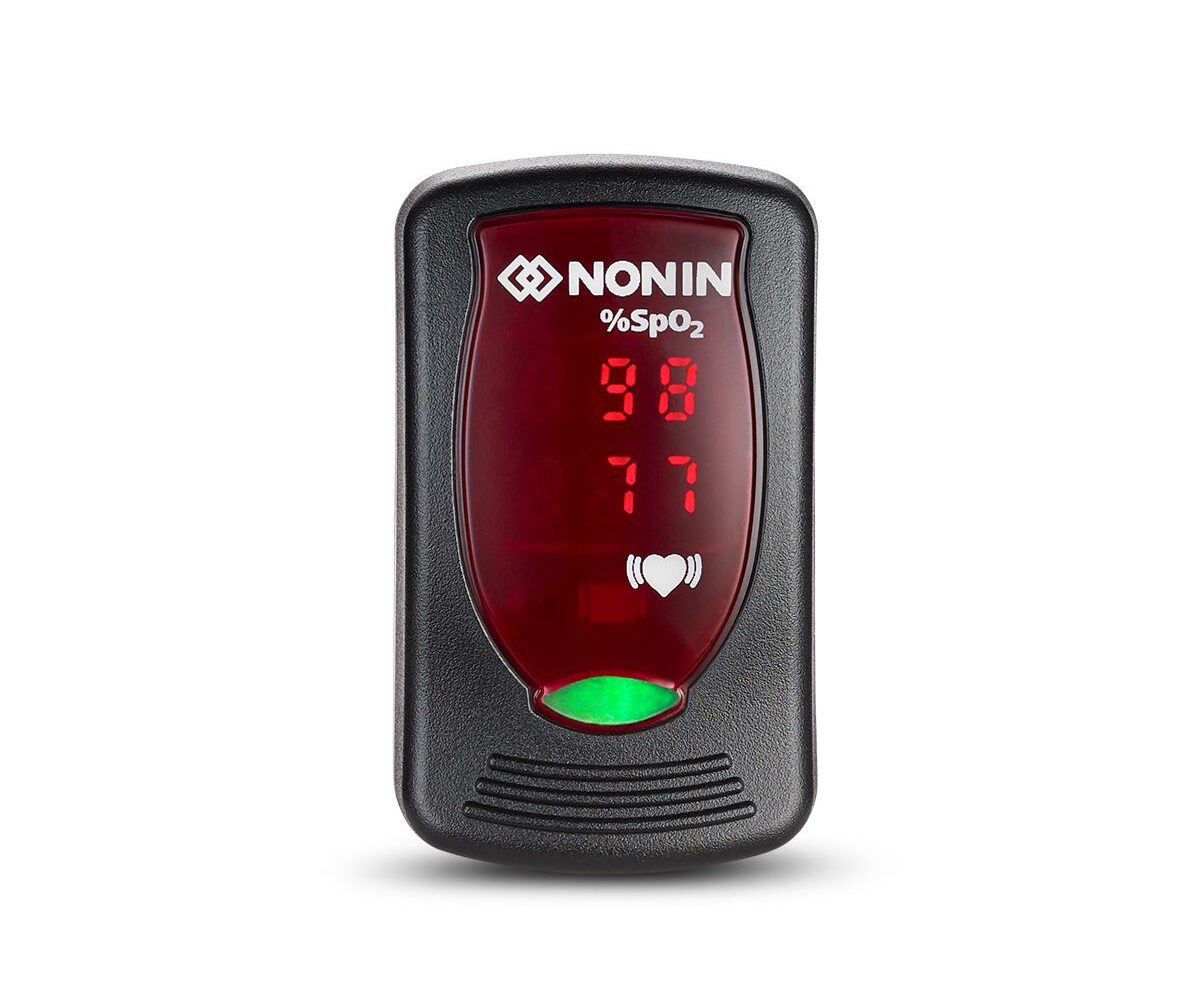
There are multiple models of the Nonin Onyx series and my experience has been that they all function quite well. These routinely come up on eBay and can be purchased for $100 or less.
In Iraq I saw the Onyx II accurately read on poly-trauma patients where less expensive models did not read at all or gave low confidence readings.
Runs on two AAA batteries.

The MightSat provides a photoplethysmograph (pleth) to assess reading confidence as well as heart rate and SPO2. Masimo advertises that the devices will calculate other values which may be of use but I have not read the papers behind those claims and have not used them in my care.
The MightSat also can connect via Bluetooth to an app from Masimo which is of interest to me but I have had issues getting it to read in real time so I will need to mess around with that a bit more.
AliveCor Kardia 3 Lead or 6 Lead
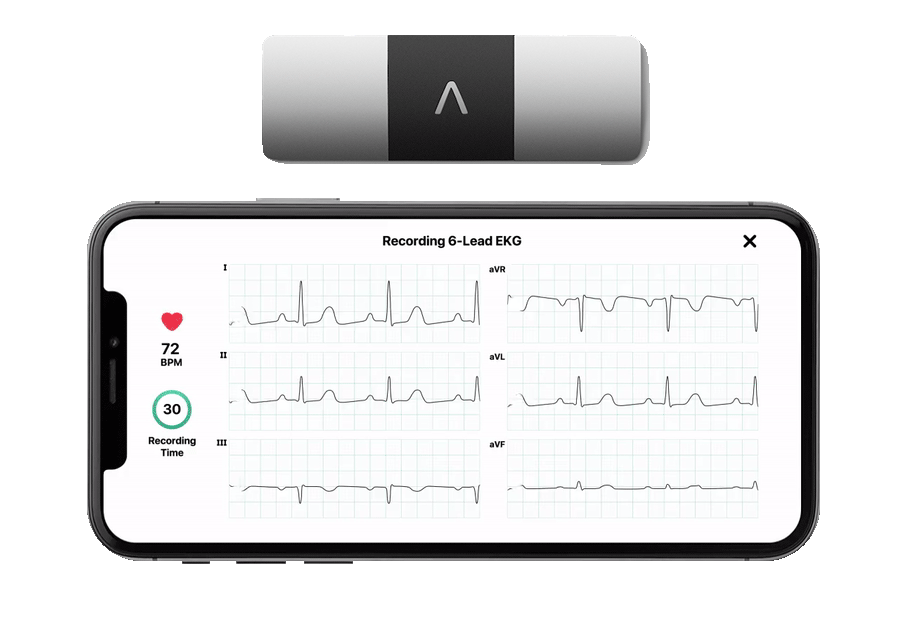
This tiny device gives you a quick 3 or 6 Lead diagnostic quality ECG which is useful for spot checks but cannot be connected to the patient for on going monitoring. Uses Bluetooth to transmit data to a smartphone where the tracing can be seen in real time and reviewed in its entirety after the fact. Export as a PDF is very easy from the Kardia app.
This comes with me on every contract and has proven to be useful.
D-Heart 12 Lead ECG

No first hand experience with this item, but its form factor and interface with either Android or iOS devices is interesting. Not currently available in the US, approved for use by healthcare providers in the UK and in Europe.
BioCare 12 Lead Pocket EKG Machine

No first hand experience with this one either. The form factor and reported ease of export makes it worthy of experimentation if you genuinely believe you will need 12 Lead capability in the field.

Through proprietary technology the Butterfly is able to adjust the frequencies it uses to cover the entire range of ultrasound probes.
This unit has proven to be durable and suitable for a variety of conditions. In very hot and very humid conditions it may overheat with about 10 min of scanning but this does not damage the unit. You will be shown a warning and the device will power down until you can cool it. 10 minutes is still a decent amount of time to scan. Longer than needed for an IV start, eFAST or RUSH.
The first generation can be purchased grey market (eBay) and will still be a good choice but the second generation allows for the connection cable to be swapped from Lightning to USB-C which increases compatibility.
I was an early adopter of the first generation Butterfly and have been tempted to upgrade to the second generation but my abilities and knowledge are still outpaced by the capabilities of the first generation.
Rapid Diagnostic Tests

One example of a Malaria RDT. Having an RDT for some of the conditions most likely to be encountered during your mission based on the mission requirements and region can be useful. For a complete list of vetted tests visit the WHO Recommended Vitro Diagnostics Tests list.

Regardless of the mission type this is useful to have.

Any proper Fresh Whole Blood transfusion kit will contain at least one of these, if not two (donor and recipient). Having extra is useful if multiple people must be typed to determine the proper donor. If your intent is to use a walking blood bank these can be used to type or confirm type of all team members/potential donors in advance.
If considering a walking blood bank as part of your resuscitation strategy, consider inclusion of RDTs for HIV, HCV, Syphilis, Malaria, Trypanosoma cruzi, Human T-Lymphotropic virus (HTLV-1/2), West Nile virus, and Babesia (American Red Cross standard). Consider other ID testing based on the area you will be working in.
Contracting a disease from a blood transmission is a problem of the living. In my practice, if I’m giving someone a blood transfusion they are big sick, close to death really. I want to prevent or reduce long term harm but if I buy them time a higher level of care can do more for them including post exposure prophylaxis in some cases.
WHO Recommended Vitro Diagnostics List
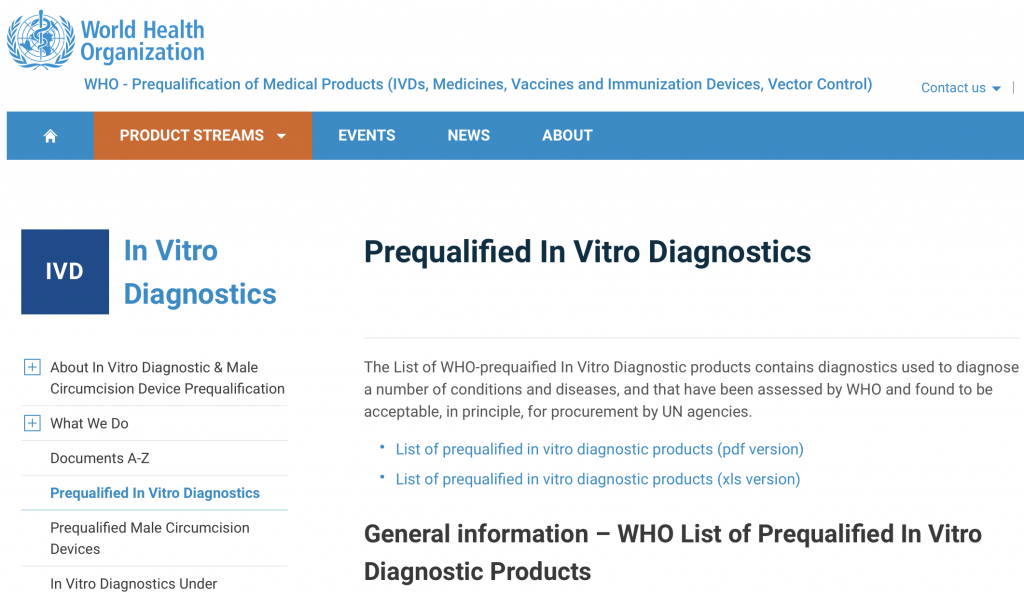
The WHO maintains a list of recommended RDTs. Please refer to this before making purchases to ensure the items acquired will function accurately and reliably.
A PubMed search for the specific product you are considering may also provide useful results.
Portable Lab Equipment


Of these two options the iSTAT is more portable but both require a cold chain for the cartridges. Either device expands your capability and may be reasonable options for a dedicated transport platform, team house, or clinic.
POC Lactate

Devices similar in size to a patient owned glucometer for reading lactate or Hb/HCT could also expand your capability. The StatStrip Xpress Lactate Meter (not yet approved in the US) was shown in one study to be comparable to the hospital standard. That company also makes a combination Lactate/Hb/HCT device (not yet approved in the US).
There are other similar POC lactate meters worthy of consideration.
Other Supplies and Equipment
There are cases where an IV drip is the most appropriate treatment but an IV pump is not available (cost, power, etc) so in the interest of providing the best quality care possible we can do better than counting drops with the Dial-A-Flow.

This complete giving set or in-line addition gives us an easy and accurate way to set our drip rate. Crisis Medicine did a great write up of the Dial-A-Flow in Austere Settings.
Not a perfect substitute by an IV pump by any stretch but when aware of known limitations the Dial-a-Flow can be useful. This may also be a back up to an IV pump should the pump fail. Intentional redundancy following a PACE (Primary, Alternate, Contingency, and Emergency) methodology allows us to place for capability degradation and anticipate how that will impact operations and patient care.
Accuracy of Intravenous Infusion Flow Regulators in the Prehospital Environment
DripAssist numerically displays the rate manually set by a user on a gravity drip set.

Case Report using the Drip Assist in Syria with a Forward Surgical Team
Comparison of DripAssist to Traditional Methods
Small study at Madigan Army Medical Center Emergency Department using the DripAssist
Hypothermia Prevention
We must do better with preventing and managing hypothermia for our trauma patients. There are commercial kits designed for the military and government market which are great if you can afford them and have the space to travel with them.
An alternative is to create a solution using the local economy once you arrive. Basic items commonly available at a box store, camping store, and hardware store include:
Sleeping bag or fleece blankets (insulation)
Tarp (wind and moisture barrier)
Tarp (litter under the patient)
Rope (handles for the litter)
Rubbing Tubing to pad the rope handles
Foam yoga mat or sleeping pad (insulation and padding under patient)
Reflective foam insulation (reflection of heat and insulation)
Pillow(s) (padding)
Inexpensive knit or fleece hat (insulation)
Incontinence pads or puppy pads (hygiene)
For a locally sourced method to in introduce heat in to the hypo wrap consider, the Hypocket.
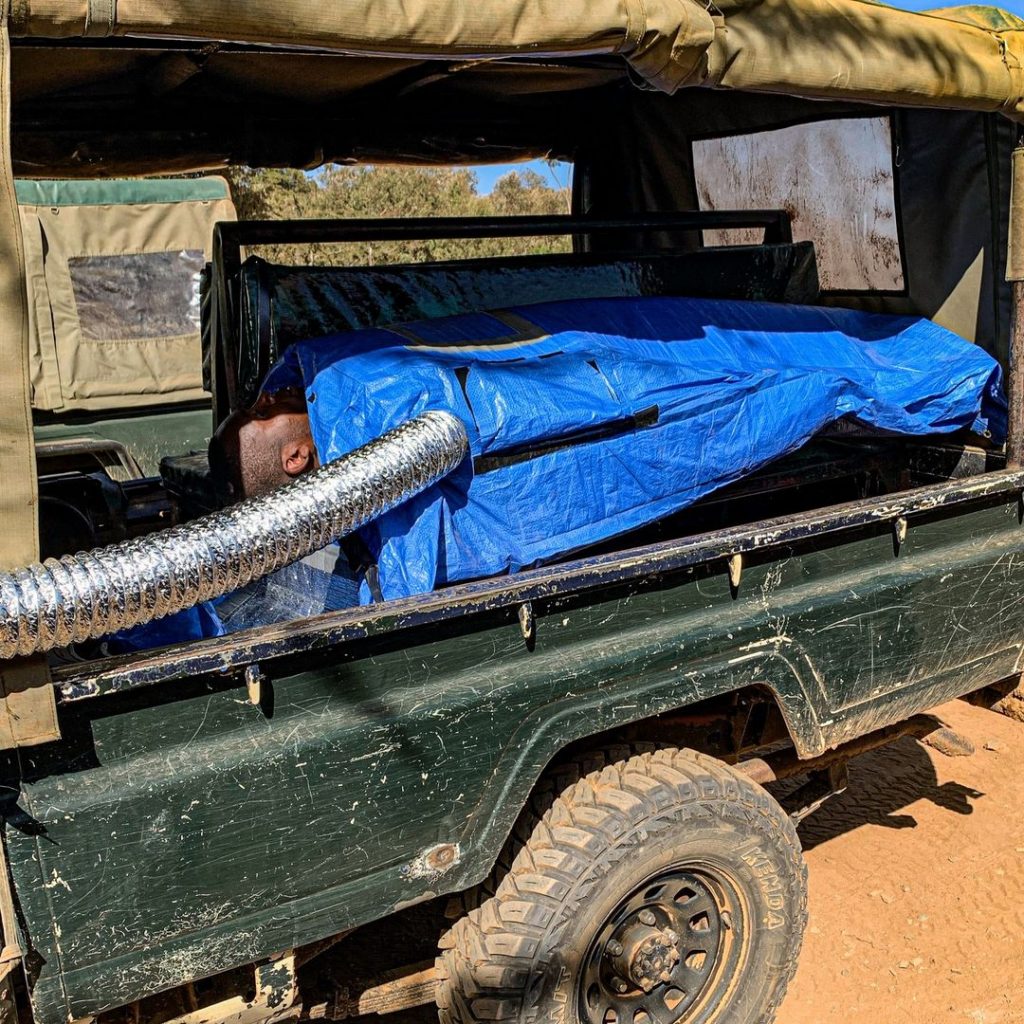
Photo Credit: The Paradocx
Consider a hybrid approach as well. The Ready-Heat Disposable Heating Blanket can be purchased domestically and carried abroad then added to locally purchased items to create an effective hypothermia wrap with less bulk to be carried in from abroad.

Purchase link from Chinook Medical
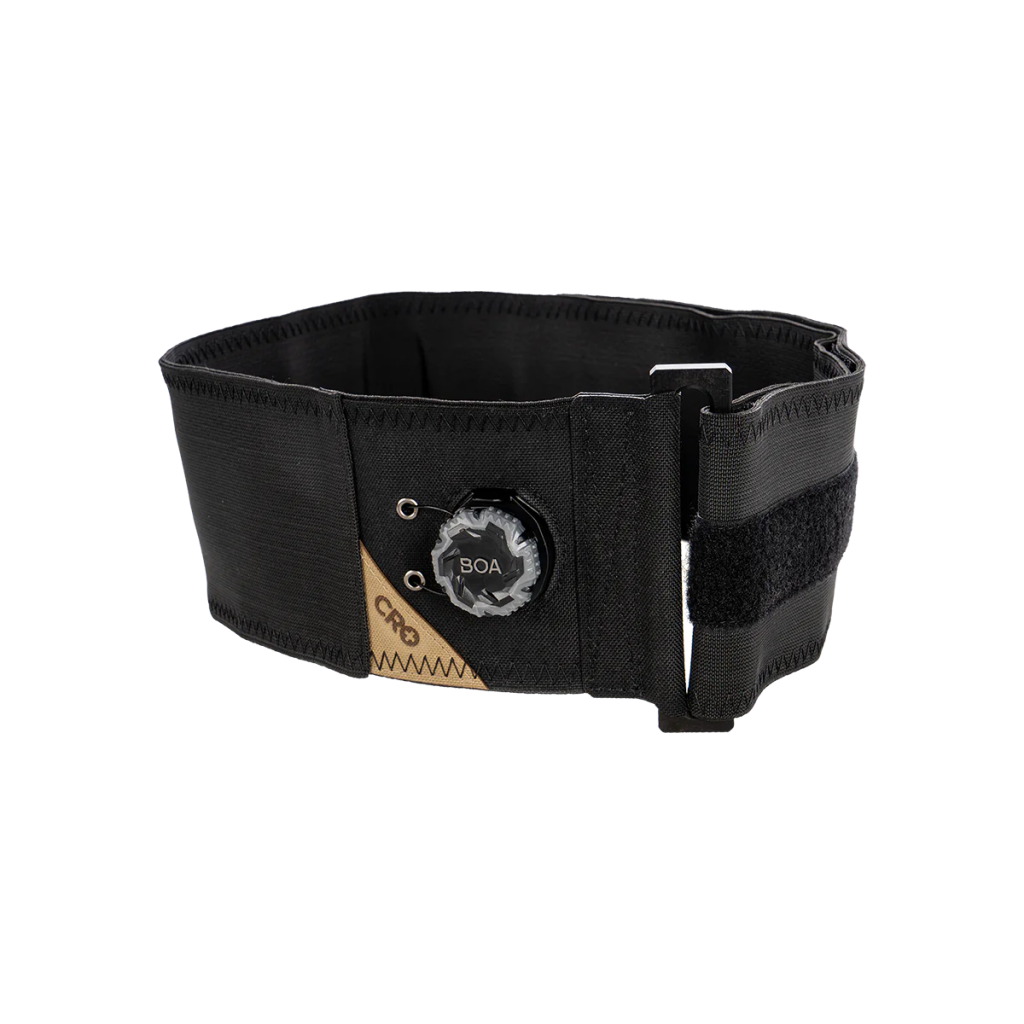
My preferred pelvic binder is from CRO Medical. In addition to our standard indications for pelvic binder placement, any lower limb amputation should automatically receive a pelvic binder. With the addition of something to focus pressure this also serves as a good junctional tourniquet if needed. When carrying this I have added a strap around it to help it stay compact and give me an easy way to bind the ankles after application of the binder. The velcro strap from many counterfeit CAT tourniquets is a great option. Cut off the windlass and baseplate.
If you must improvise a pelvic binder or junctional TQ, do so before you need it. I’m partial to the SAM splint and tourniquet method. This is another good use for a counterfeit CAT TQ.
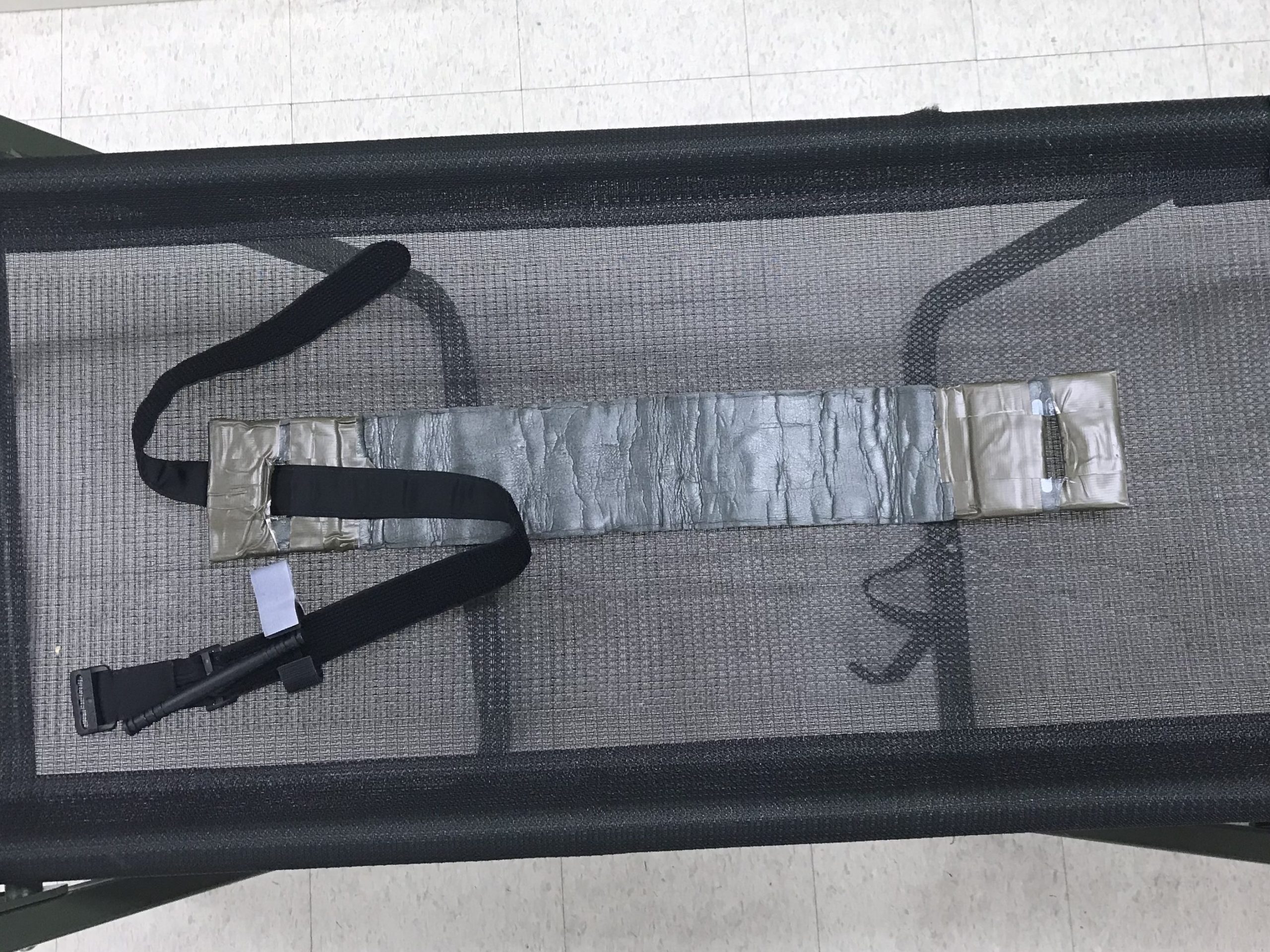
EMMA Capnograph
Podcast episode about field use of the EMMA
Pediatric Trauma
Here are some of the papers I have found useful when learning more about managing pediatric trauma patients and understanding the scope of the issue.
Counting the costs of trauma: the need for a new paediatric injury severity score, Sargent W et al. The Lancet Child & Adolescent Health, 5, 6, 2021,391-392, doi.org/10.1016/52352-4642(21)00132-2.
Patterns of civilian and child deaths due to war-related violence in Syria: a comparative analysis from the Violation Documentation Center dataset, 2011-16. Lancet Glob Health 2018; 6: e103-10.
50% of Gaza is under 15 years old
Tranexamic acid administration to pediatric trauma patients in a combat setting: The pediatric trauma and tranexamic acid study (PED-TRAX) Matthew J. Eckert, MD, Thomas M. Wertin, MD, Stuart D. Tyner, PhD, Daniel W. Nelson, DO, Seth Izenberg, MD, and Matthew J. Martin, MD, Tacoma, Washington DOI: 10.1097/TA.0000000000000443
And if it happened to children? Adapting medical care during terrorist attacks with multiple pediatric victims Alix-Séguin et al
Prehospital Blood Administration in Pediatric Patients: A Case Report, Prehospital Emergency Care Aaron Dix, Blake Jones, Mirinda Ann Gormley, Daniel L. Schwerin, Robert Gates & Gerald (Wook) Beltran (2023): DOI: 10.1080/10903127.2023.2193980
Syrian Snipers Target Children
Survey of Trauma Registry Data on Tourniquet Use in Pediatric War Casualties Kragh et al
Case Report: Life Saving Application of Commercial Tourniquet in Pediatric Extremity Hemorrhage Callaway et al
STAT vs CAT (Tourniquet comparison study – Adult simulation)
B.M. Carius, A.D. Tapia, N. Uhaa, et al., , American Journal of Emergency Medicine, https://doi.org/10.1016/j. ajem.2021.01.017
STAT Tourniquet Assessment by Crisis Medicine (including a pediatric volunteer)
Pediatric Blast Injury Field Manual Save The Children 2019
Blast Injuries Save the Children
Reading for General Preparation, Background, and Mindset
Deep Survival Laurence Gonzales
The Parachute Ward by Brian Jeffrey Street
Guerrilla Surgeon by Dr. Lindsay Rogers
Death of the Golden Hour by Dr. Rocky Farr
Managing the Unexpected: Resilient Performance in an Age of Uncertainty
Becoming a high reliability organization (ICU focused)
Clinical Practice Guidelines and Best Practices
US Department of Defense
Joint Trauma System Clinical Practice Guidelines
Prolonged Field Care CPGs and Supporting Materials
TCCC Guidelines and Training Materials
Standard Medical Operating Guidelines for Critical Care Flight Paramedics
MSF/Doctor’s Without Borders
Essential Obstetric and Newborn Care
Clinical Guidelines Diagnosis and treatment manual
World Health Organization Emergency Medical Teams
Blue Book (General Response)
Red Book (Response to Armed Conflict)
Centre of Competence on Humanitarian Negotiation (CCHN)
CCHN Field Manual on Frontline Humanitarian Negotiation
International Committee of the Red Cross
War Surgery – Working With Limited Resources In Armed Conflict And Other Situations Of Violence Volume 1 (select document type: pdf and select your preferred language to get the link for a free download)
War Surgery – Working With Limited Resources In Armed Conflict And Other Situations Of Violence Volume 2 (select document type: pdf and select your preferred language to get the link for a free download)
Assorted
Ciottone’s Disaster Medicine 2nd Edition
Good Practice Review Operational Security Management in Violent Environments
International Search and Rescue Advisory Group (INSARAG) Medical Technical Library
Bellingcat
Excellent investigative journalism often focusing on conflict areas. Beyond the stories themselves one reason to read their work is to see how open source (publicly available) data can be used to unravel conspiracies and de-anonymize people which in turn can show you how you may be vulnerable to bad actors using the same methods.
12 Essential Capabilities of Austere Emergency Care
The 12 Essential Capabilities are an evolution of the “10 Essential Capabilities of Prolonged Field Care” created by many of the same people who wrote the 10 Essential Capabilities.
International Search and Rescue Advisory Group Medical Technical Reference Library
Training Opportunities
Tactical Medicine Training Overview
Training within this category will likely focus on the management of traumatic injuries in conditions where the proximity to threats alters care rendered and those threats create particular injury patterns.
Unless someone chooses a direct patient care role close to the front of a conflict, most of the patient care rendered will not be massive trauma. The majority of the care will be post-resuscitation, primary care, psychological, or otherwise dealing with less acute problems. If working in the front line or close to the front line roles then expect to see massive trauma. For those not close to the front it is still essential to know how to treat massive trauma as you may encounter it unexpectedly. The farmer who drives their tractor over an anti-tank mine might be brought to the foreign doctors working in the village even if those doctors are pediatricians doing a vaccination campaign. The child that plays with unexploded ordinance which detonates may be brought to the team teaching POCUS.
There is also a chance you or one of your team members may become a patient and responding correctly to that means being properly trained to render self-aid then buddy aid and finally aid from a proper medic. This consideration of the rescuer becoming a patient is rarely thought of in traditional healthcare settings. Motor vehicle accidents are one of the most persistent threats we will encounter anywhere and this is made worse in conflict zones by degraded roads, grossly fatigued drivers, removed or destroyed traffic control devices, vehicle check points, anti-vehicle installations (hedge hogs, slalom turns, hesco barriers). Driving at night can be even more hazardous as many military vehicles operating at night will do so with night vision and no visible lights. Best to avoid driving at night when possible and exercise extreme caution when driving.
Tactical Emergency Casualty Care (TECC) and Tactical Combat Casualty Care (TCCC) are the names of public guidelines and may also be the name courses offered by various training providers. TECC is designed for a civilian, all hazards response where as TCCC is designed for the treatment of war wounded combatants within a military healthcare system. Both show an established best practice based on available evidence and committee consensus. The committee which is responsible for the TCCC guidelines also evaluates equipment and makes recommendations. While not exhaustive and being US focused the equipment recommendations can be a useful means to speed up decision making regarding equipment acquisition for individuals and organizations which lack particular insight in to the equipment. It is still preferable to have an experienced end user driving purchasing decisions when ever possible.
The committees which create the TECC and TCCC guidelines do not issue certifications stating someone is TECC or TCCC certified. The Committee for Tactical Emergency Casualty Care has a pathway for organizations to be Recognized Educational Partners. The organizations which become a REP can issue a certificate using a version of the C-TECC logo and stating that the course follows the guidelines. While the National Association of EMTs would like to pretend they are the only game in town and they absolutely have market dominance they have no monopoly on the TECC guidelines or education surrounding the guidelines.
To access all of the TECC guidelines visit C-TECC and visit TECC Pediatric Guidelines for the pediatric specific ones.
The TCCC Guidelines can be accessed here and training materials are here.
The Department of Defense (DOD) separates TCCC training in to different levels. These levels are not reflected in the guidelines as the assumption is that those following the guidelines will practice to their level of skill, certification, and competency. The levels of TCCC training and their intended audience are denoted below. Commercial training providers may use the same distinctions in their marketing.
| Level | Description |
| All Service Members | All Service Members (ASM) Course is intended to familiarize military personnel with TCCC concepts and basic lifesaving skills to ensure they are adequately prepared to render medical aid to a trauma casualty. Instruction includes basic hemorrhage control skills and recognition of more serious injuries. |
| Combat Life Saver | Combat Lifesaver (CLS) Course is intended to familiarize military personnel with TCCC principles, concepts, and critical skills to ensure they are adequately prepared to render medical aid to a trauma casualty. Instruction includes advanced skills needed to treat the most common causes of death on the battlefield, which are massive hemorrhage and airway/respiratory problems, as well as identification and treatment of other associated but not immediate life-threatening injuries. |
| Combat Medic / Corpsman | Combat Medic/Corpsman (CMC) Course is intended to equip CMCs to provide more advanced prehospital casualty care than was taught in the ASM or CLS courses. Instruction includes the use of advanced medical equipment and knowledge in the management of life-threatening injuries commonly encountered on the battlefield. |
| Combat Paramedic / Provider | Combat Paramedic Provider (CPP) Course is designed for advanced providers who are expected to provide the most sophisticated care to keep our wounded Service members alive and get them to definitive care. |
You can and should study the TECC and TCCC guidelines to know what is expected, what order to perform interventions in, etc but this knowledge alone is insufficient. Attending training in person allows you to use equipment you may not have been exposed to before, learn and practice skills, and work through problems that challenge you.
There are courses which build on the standards of TCCC and provide training to manage a casualty out of hospital for an extended time or during evacuation with consideration for differences between standard 911 transport and that which occurs in more austere environments.
Training Providers and Courses
Special Operations Aid & Rescue
Tactical Medical Practitioner
Extended Austere Provider
911 Tactical Medicine
Operational Medicine Courses
SEI NH
Special Tactics Operators’ Advanced Life Support
Prolonged Field Care
Precision Tactical Medicine
TCCC
Prolonged Field Care
PPA International ALS Training
Tactical Medicine In Hostile Environments
Prolonged Field Care And Evacuation Care Course
College of Remote and Offshore Medicine
Austere Emergency Care
Tropical, Travel and Expedition Medical Skills Course
Anyone Not Ready
Prolonged Field Care
Austere Emergency Care
To help better round out your education speciality training in areas like tropical medicine and chemical weapons can prove useful. A week of training in either area is little more than developing conscious incompetence or conscious competence but this is an important stage in learning so that you can make better decisions and at least have a foundation to build on.
Chemical weapons do not always mean purpose created and deployed agents like VX or Sarin, but can be common industrial chemicals like chlorine and ammonia which may be added to conventional explosives or may be released accidentally when fighting occurs in the vicinity of their storage. In instances militaries may deploy chemical agents typically used as less than lethal agents against demonstrations so a better understanding of these is useful also.
Walter Reed Army Institute of Research
Operational Clinical Infectious Disease Course (Tropical Medicine)
US Army Medical Research Institute of Chemical Defense
Medical Management of Chemical and Biological Casualties
Field Management of Chemical and Biological Casualties
Hostile Environment Awareness Training (HEAT)
HEAT courses are typically considered the minimum training for professional journalists and aid workers traveling to dangerous areas but are rarely provided by organizations for volunteers deploying on their behalf. HEAT deals with a little basic trauma care but more about how to navigate and survive conflict areas including how to drive, how to approach armed check points, how to respond to kidnapping, deescalation tactics, and more.
I strongly encourage anyone thinking about conflict zone medicine to take HEAT at their own expense sooner rather than later so that you are better prepared for a short notice deployment. If you go through an employer sponsored one later on that’s even better.
Some HEAT curriculums are optimized for particular jobs (journalists, missionaries, aid workers) where as others are more general. Both approaches are valid and valuable. Getting the training and adapting it to your particular needs is better than not getting it at all. Plus taking a course with folks you would not normally interact with is a great networking opportunity and you may be able to call on those people in the future.
Safer Access
Hostile Environment Awareness Training
Blue Spear
Hostile Environment Awareness Training
Canadian HEAT Training
Security in Complex and Remote Environments Course
Advanced Life Support wilderness medicine courses are also beneficial for those going to a conflict environment since they train to provide professional healthcare in austere environments. Many of those lessons can be adapted to the conflict environment and in fact portions of current content being taught comes from conflict environments.
The Wilderness Life Support: Medical Provider course delivered by REDSTAR in Kentucky is an especially good offering of the WLS:MP program. The WLS:MP course curriculum is open source and many organizations deliver it. I have seen a variety in quality with all meeting the minimum, but some, like REDSTAR, going above and beyond thanks to their excellent instructors who are actively practicing ALS wilderness response as part of their response duties.
Any rescue training, especially that which is focused on low resource environments may be useful should conditions on the ground change after you arrive. Knowing tactics to extricate someone from a vehicle with hand tools or enter a locked structure (destructively or non-destructively) gives you additional ways to respond to the dynamic environment.
